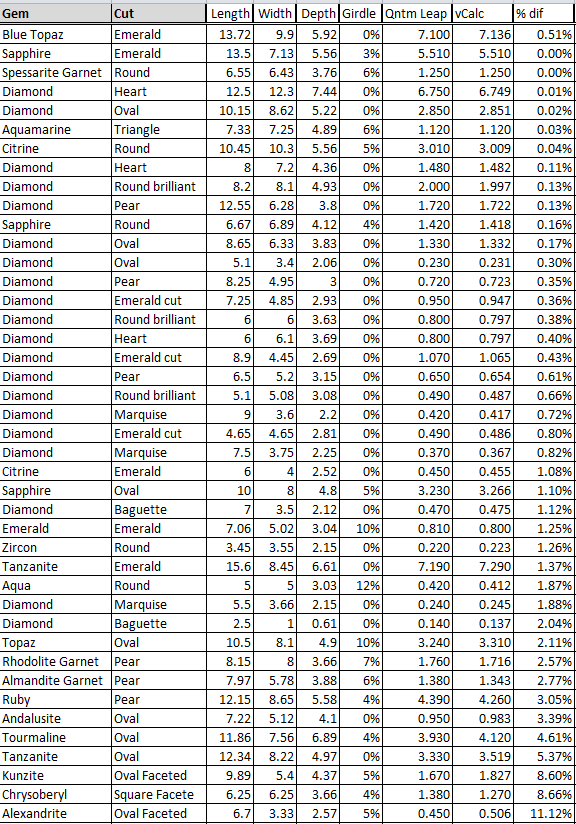Diamond Carat Weight Calculator
This jewelers suite of calculators includes carat weight estimations of diamonds based on the cut diamonds shape and size that can be measured while still within a setting. This enables the jeweler to estimate the carat weigh of the diamond without damaging the setting.
The diamond weight formulas contain carat weight equations that are specific to diamonds and diamond cuts:
- Compute carat weight of Round Brilliant diamond
- Compute carat weight of Oval Brilliant diamond
- Compute carat weight of Heart Shaped diamond
- Compute carat weight of Emerald Cut diamond
- Compute carat weight of Baguette diamond
- Compute carat weight of Princess Cut diamond
- Compute carat weight of Triangular Brilliant diamond
- Compute carat weight of Marquise Brilliant diamond
- Compute carat weight of Pear Shaped Brilliant (Teardrop) diamond
- Compute carat weight of Tapered Baguette diamond
- Compute carat weight of Old European cut diamond
- Compute carat weight of Cushion diamond
Girdle Thickness Guide
Between the Crown and the Pavilion of a diamond is the Girdle. The thickness of the girdle effects the estimated volume and therefore carat weight of the diamond. the diagram is a benchmark for the jeweler to estimate the thickness of the girdle.
For the carat weight estimation of other gems (e.g. ruby, sapphire), CLICK HERE.
NOTE: Never use an estimating equation for the weight of a gem if you can weigh it on a quality jeweler's scale. These equations are useful when the jeweler is trying to preserve the setting of the gem while still providing a carat weight estimate. In this way, the jeweler can ascertain the type of gem, its shape and then using precise measuring tools measure the salient dimensions for use in these equations. These steps can be done while the gem remains in the setting.
The vCalc Jeweler's calculator is free to use like all the other equations and calculators found in vCalc. Please feel free to comment on this wiki page using the comment button below and help us make a better Jeweler calculator for you.
APPLICATIONS
This calculator provides a calculator to Jewelers and other merchants of diamonds to compute an estimated current market value for jewelry items. Likewise private owners and insurance providers can make similar estimates for use in establishing the basis for insurance valuation and coverage.
ACCURACY COMPARISON
The carat weight equations and data used in vCalc's jewelry library and calculator were reviewed by a certified gemologist. The equations are based on industry recognized formulas and data. The table below shows a comparison of computations between vCalc and an industry accepted application (Quantum Leap).
The length, width and depth are in millimeters (mm), and the Quantum Leap and vCalc measurements are in carats (cwt).

The largest variance, an oval faceted alexandrite, which can be seen in the last row above, has been double checked against several source equations which tend to support vCalc's accuracy.
